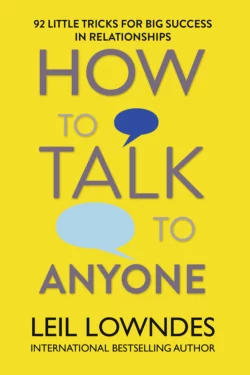How to Talk to Anyone: 92 Little Tricks for Big Success in Relationships

Leil Lowndes
Тип: электронная книга
Жанр: Общая психология
Язык: на английском языке
Стоимость: 619.36 ₽
Статус: В продаже
Издательство: HarperCollins
Дата публикации: 16.04.2024
Отзывы: Пока нет Добавить отзыв
О книге: Never be at a loss for words again!Perfect your people skills with his fun, witty and informative guide, containing 92 little tricks to create big success in personal and business relationships.In How To Talk To Anyone, bestselling relationships author and internationally renowned life coach Leil Lowndes reveals the secrets and psychology behind successful communication. These extremely usable and intelligent techniques include how to:• Work a party like a politician works a room• Be an insider in any crowd• Use key words and phrases to guide the conversation• Use body language to connectThis is the key to having successful conversations with anyone, any time.